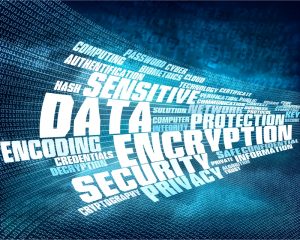Keep business data safe from inside threats
 The ability to print directly from the cloud or a mobile phone or tablet creates obvious advantages, helping to make everyday business activities much more efficient. Ease of access, however, also creates security challenges that businesses must overcome in order to help keep sensitive information safe.
The ability to print directly from the cloud or a mobile phone or tablet creates obvious advantages, helping to make everyday business activities much more efficient. Ease of access, however, also creates security challenges that businesses must overcome in order to help keep sensitive information safe.
In a recent Dell global security survey, nearly three quarters of the organizations questioned said that they had suffered a security breach at some point. And security isn't just an issue for large corporations; no matter how big or small your business is, you'll definitely have information on file that needs to be kept safe. This could be personal data, bank details, or even a simple contacts database.
Cybercriminals are becoming increasingly sophisticated, as demonstrated in a recent report from the RAND Corporation, but the reality is that danger can also come from closer to home. Although you may trust your employees, a rogue member of staff or disillusioned co-worker has the potential to create immeasurable damage to your organization.
The good news is that guarding your sensitive documents needn't be difficult or expensive. Here are some simple things that you can do to help protect your organization:
Password protection and controlled access
No matter how much you like your co-workers, giving them access to all your files is unnecessary and puts sensitive data at risk. You may consider using password protection on individual files, or moving groups of documents into a separate cloud storage or hard drive that only you have access to. Passwords are easy to activate; most computer programs and file storage systems will allow you to apply them via the settings dashboard. Network controls can also let you determine who in your organization has access to certain files.
Most importantly though, make sure team members understand the importance of these measures. When walking around any office, it's surprising how many people leave passwords and access codes on post-it notes on their desks -- it's pretty much the equivalent of keeping your PIN written on the back of your credit card.
Make sure printed documents are stored under lock and key
Any printed copies of sensitive documents should be stored out of sight -- and locked away if you don't want them getting into the wrong hands. Invest in a lockable filing cabinet and consider keeping them in a separate facility if they are particularly valuable.
There are various technologies that can help -- a multi-function printer (MFP) for example, can help you avoid accidentally leaving confidential documents on the device. MFPs come with built-in features, such as secure print, which will ensure that your documents can't be viewed or printed until a special code has been entered. This can be extended further by using card access control for "pull printing" with additional software and will ensure that your documents can be printed securely on any connected device on the network. As well as access control and user authentication, MFPs can even be set up with physical locks.
Controls to prevent users printing or print-screening sensitive files
Any documents that your employees need to access can still be protected by disabling the print screen function, or you could ask your IT support to help you to prevent printing certain content altogether. That way, you can ensure that valuable information can't be copied and taken away when your employees leave the office.
Secure data encryption to prevent hackers accessing your files
If you hold customer data, you'll need to take extra steps to protect it or you could end up liable in the event of a breach. Depending on how much data you store, what type of information it is and what you use it for, you may need to seek more advanced guidance and support. However, as a good first step, you should encrypt your data. Using data encryption software, you can make sure that anyone who does get into your system won't be able to access the information you need to protect.
Scanning is often overlooked when considering data encryption. When documents are scanned to the cloud, they represent a risk of being accessed or hacked, so it's important that any MFP or scanner you use can scan documents that are fully encrypted.
With cybercrime becoming an increasing priority, it can be easy to forget the dangers in your immediate environment. Putting effective security policies in place, however, will not only help you to keep hackers out, but will also prevent your physical documents from getting into the wrong hands.
Dave McNally is the product marketing director for EMEA at Dell Imaging
Published under license from ITProPortal.com, a Net Communities Ltd Publication. All rights reserved.